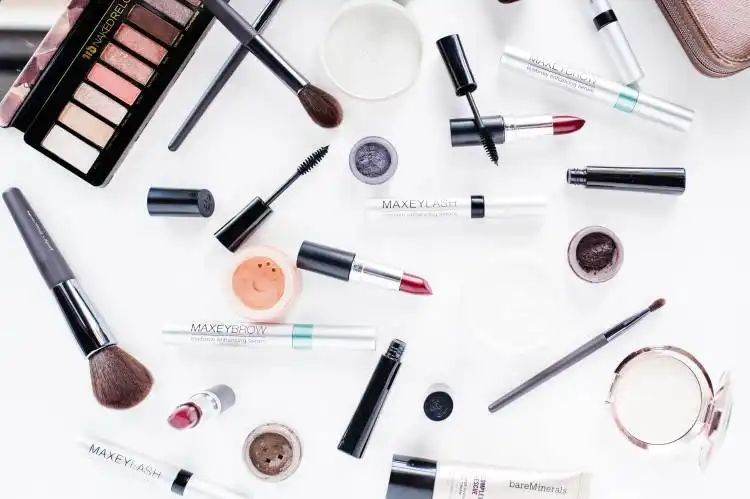Start a Tanning Salon
Catching the Eternal Summer: Illuminate your Entrepreneurial Journey with a Tanning Salon Business
| Updated


TANNING SALON
Imagine catching the golden kiss of the summer sun, but indoors and all year round! Welcome to the glowing world of a Tanning Salon business. This radiant venture offers controlled artificial tanning services to sun-lovers without the seasonal constraints. You'll be lighting up folks' lives, not only attaining that sun-kissed look, but also boosting their mood -who doesn't feel happier with a tan? Remember, while you're promoting the bronze, don't forget to educate your customers about safe tanning practices!
Jump to Business Plan
RELATED BUSINESS IDEAS
Browse ALL Health & Beauty Innovations Business Ideas
Discover Your Perfect Domain
Unlock the door to your online success with our hand-picked selection of premium domain names. Whether you're starting a new venture or rebranding an existing one, the right domain can set the tone for your digital presence. Browse through our curated list, each with its unique potential to enhance your brand's visibility and credibility.
TANNING SALON MINI BUSINESS PLAN
This a quick reality check to help you identify the strengths and weaknesses of your business concept before you dive in.
Expected Percent Margin:
- Gross Margin: 65-75%
- Net Profit Margin: 15-25%
Earnings Expectations:
Daily Earnings:
- Single Session: $25 - $100
- Memberships or Packages: $30 - $80 per month
Weekly Earnings:
- Single Session Sales: $750 - $3,000
- Membership Sales: Varies depending on number of new sign-ups
Monthly Earnings:
- Total Earnings (Memberships + Single Session Sales): $3,000 - $13,000
Annual Earnings:
- Total Earnings: $36,000 - $156,000
Actions to Hit Those Numbers:
Pricing and Service Strategy:
- Pricing Policy: Balance between recurring membership fees and single session tans.
- Service Variety: Offer varied tiers of services like basic tans, premium beds, spray tans, etc.
Marketing and Customer Acquisition:
- Local Marketing: Invest in local marketing, both online and offline.
- Customer Retention: Implement loyalty programs, referral benefits for customer retention.
Sales and Customer Experience:
- Customer Service Training: Provide excellent customer service to ensure repeat customers and good reviews.
- Upselling Skills: Train staff in upselling higher-margin services and products.
Cost Control:
- Rent Expenses: Choose a location with a rent that is less than 10% of your expected monthly sales.
- Equipment Maintenance: Set aside funds for regular maintenance and unexpected repairs of tanning beds.
Business Operations:
- Operating Hours: Stay open for longer hours during peak tanning season.
- Session Volume: Aim for a consistent flow of appointments while monitoring peak and off-peak hours.
Remember: This is a highly regulated industry with potential health concerns. Ensure you operate in compliance with all local and federal laws. Always consult a business advisor for personalized advice. These estimates may vary based on location, competition, and the state of the economy.
NOT WHAT YOU HAD IN MIND? Here are more ideas



Browse ALL Health & Beauty Innovations Business Ideas
Grab Your Business Website Name
Before you get caught up in the whirlwind of setting up your business, invest in a domain name. It's a small but significant step that lays the foundation for your brand and makes it easier for customers to find and trust you. Just like you wouldn't build a house without securing the land first, don't build a business without securing your domain name.
"Why? Can't that wait?" Here's why it shouldn't
Step 1: Determine if the Business is Right for You
Starting a tanning salon is a big undertaking, and it is important to make sure that it is the right business for you. Before you start, you should take the time to do a thorough analysis of the potential startup and ongoing expenses. This will help you determine if the business is a good fit for you and your budget.
Startup expenses can include the cost of renting or purchasing a space, purchasing tanning beds and other equipment, and hiring staff. It is important to research the costs of these items in your area to get an accurate estimate of the total startup costs.
Ongoing expenses will include rent or mortgage payments, utilities, insurance, and staff salaries. You should also factor in the cost of marketing and advertising, as well as the cost of any supplies or products you will need to keep your business running.
Examples of ways to make money in a tanning salon include charging for tanning sessions, selling tanning lotions and other products, and offering additional services such as spray tanning or airbrush tanning. You should also consider offering packages and discounts to encourage customers to come back. Additionally, you can look into partnerships with local businesses or organizations to increase your customer base.
Step 2: Name the Business
When naming a business, it is important to consider the message you want to convey to potential customers. Think about the type of business you are running and the services you offer. It is also important to consider the name’s availability. You may want to research if the name is already taken or if it is trademarked. Additionally, you may want to consider if the name is easy to remember and pronounce. It is also important to consider if the name is unique and memorable.
Once you have a few ideas, it is important to research the names to make sure they are available. You can do this by searching the internet, checking with the local government, and searching the US Patent and Trademark Office database. Additionally, you may want to consider registering the name with the state or federal government. This will help protect your business name and prevent others from using it.
When you have a few names in mind, it is important to test them out. Ask friends and family for their opinion and get feedback from potential customers. This will help you determine which name is the best fit for your business. Additionally, you may want to consider hiring a professional to help you come up with a name.
Once you have chosen a name, it is important to register it with the state or federal government. This will help protect your business name and prevent others from using it. Additionally, you may want to consider registering the name with the US Patent and Trademark Office. This will help protect your business name and prevent others from using it. Finally, it is important to make sure the name is available for use on social media and other online platforms. This will help you create a consistent brand identity and make it easier for customers to find you online.
Step 3: Obtain Licenses and Permits
The third step in starting a tanning salon is to obtain the necessary licenses and permits. Depending on the location, there may be different regulations and requirements for businesses. It is important to research the local laws and regulations to ensure that the business is compliant with all applicable laws. Additionally, the business may need to obtain a business license, a health permit, and a zoning permit. It is also important to check with the local health department to ensure that the tanning salon meets all safety requirements. Additionally, the business may need to obtain a liability insurance policy to protect the business from any potential lawsuits. Finally, the business may need to obtain a tax identification number from the IRS.
Step 4: Find a Suitable Location
Finding a suitable location for your tanning salon is essential to the success of your business. You should consider factors such as the size of the space, the amount of foot traffic, the local competition, and the cost of rent. Additionally, you should research the local zoning laws to ensure that you are allowed to open a tanning salon in that area. It is also important to consider the amount of parking available, as this will be a major factor in how many customers you can attract. Once you have identified a suitable location, you should contact the landlord or property manager to discuss the terms of the lease. Make sure to negotiate the best deal possible, as this will help you save money in the long run.
Step 5: Purchase Equipment
Once you have secured the necessary licenses and permits, you can begin purchasing the necessary equipment for your tanning salon. This includes tanning beds, tanning booths, and other tanning equipment. You will also need to purchase furniture, such as chairs, tables, and other items. Additionally, you will need to purchase supplies such as lotions, towels, and other items. You will also need to purchase cleaning supplies and other items to keep your salon clean and sanitary. It is important to research the various types of equipment and supplies that are available to ensure that you are getting the best quality for the best price. Additionally, you should research the warranties and guarantees that are offered with the equipment and supplies to ensure that you are covered in the event of any malfunctions or defects. Finally, you should also research any financing options that may be available to help you purchase the necessary equipment and supplies.
Step 6: Hire Employees
Hiring employees is an important step in starting a tanning salon. It is important to find employees who are knowledgeable about tanning and customer service. It is also important to find employees who are reliable and trustworthy. When hiring employees, it is important to consider their experience and qualifications. It is also important to consider their availability and willingness to work. It is important to make sure that the employees are properly trained in the use of tanning equipment and safety protocols. Additionally, it is important to ensure that the employees are familiar with the policies and procedures of the salon. Finally, it is important to ensure that the employees are familiar with the products and services offered by the salon.
Step 7: Market the Business
Once the tanning salon is up and running, the next step is to market the business. This can be done in several ways. First, create a website for the business. This website should include information about the services offered, prices, and contact information. Additionally, create social media accounts for the business and post regularly to keep customers informed. Additionally, create a newsletter and email it to potential customers. Finally, create a referral program to encourage customers to spread the word about the business. This could include discounts or free services for customers who refer new customers. Additionally, advertise in local newspapers, radio, and television. This will help to get the word out about the business and draw in new customers.
Step 8: Develop a Business Plan
A business plan is an essential tool for any business, and a tanning salon is no exception. A business plan should include a detailed description of the services offered, a market analysis, financial projections, and a marketing plan. It should also include a timeline for when the business will become profitable. When developing a business plan, it is important to consider the competitive landscape and the local market, and to be realistic about the potential for success. Additionally, it is important to consider the potential risks associated with starting a tanning salon, such as the cost of equipment, the cost of insurance, and the potential for customer injury. Finally, a business plan should include a detailed budget and a timeline for when the business will become profitable.
Step 9: Open the Doors
The final step in starting a tanning salon is to open the doors and begin serving customers. Before opening, it is important to make sure that all necessary permits and licenses have been obtained and that the salon is compliant with all local and state laws. It is also important to make sure that all of the equipment is in working order and that the salon is clean and inviting. Additionally, it is important to make sure that the staff is properly trained and that they are aware of all safety protocols. Finally, it is important to make sure that the salon is properly advertised and that customers know when the salon is open and what services are offered. Once all of these steps have been taken, the salon is ready to open and begin serving customers.
EXPLORE MORE CATEGORIES
Browse ALL Business Idea Categories
TAKE THE NEXT STEPS










